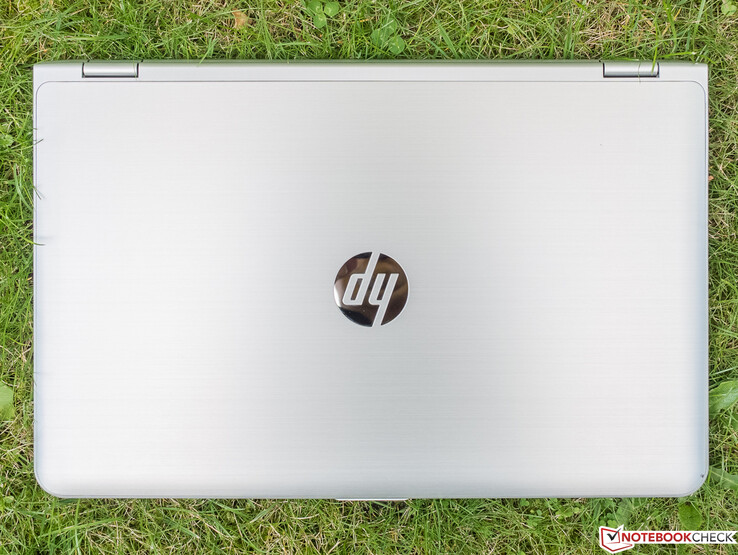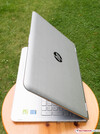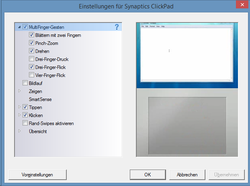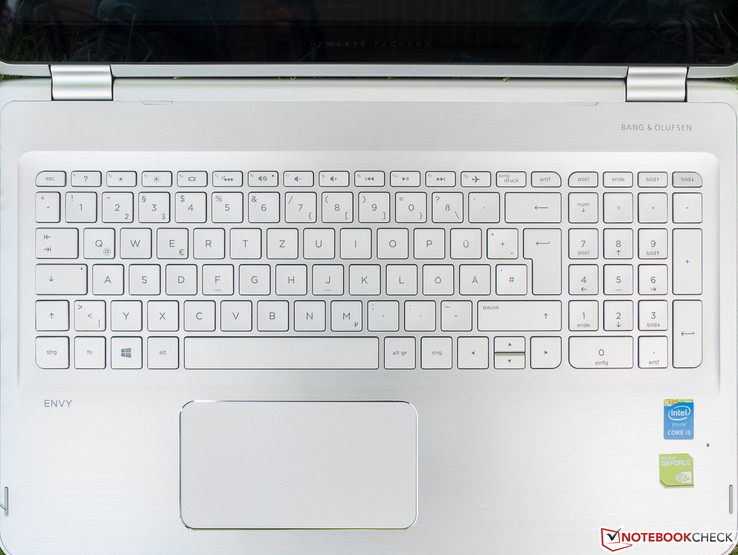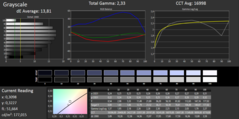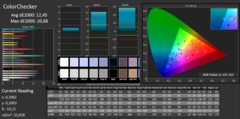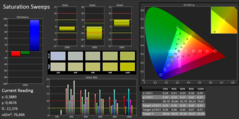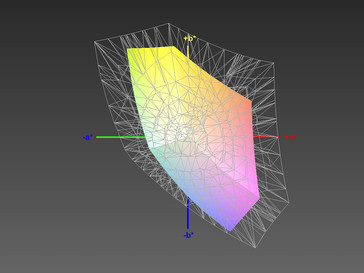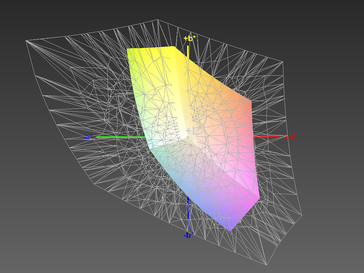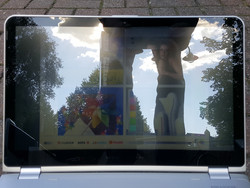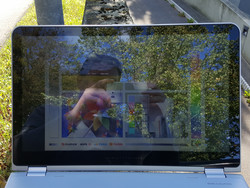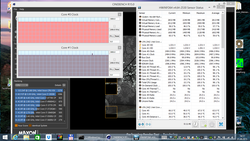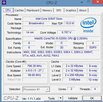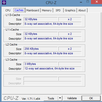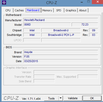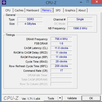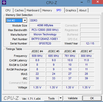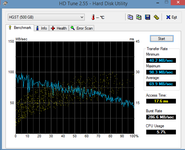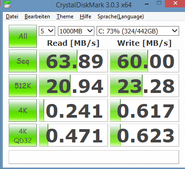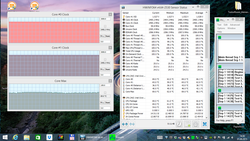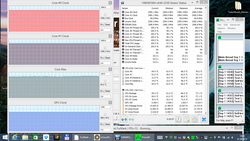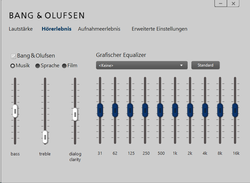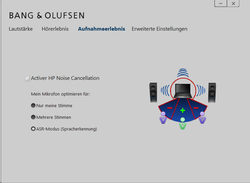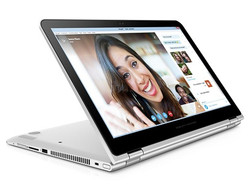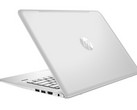HP Envy 15-w000ng x360 Notebook Review

For the original German article, see here.
Besides Toshiba and Asus, HP is one of the few manufacturers that have been recurrently offering convertibles with a 360° foldable 15-inch touchscreen - unusual in this category. The construction allows optional use in tablet mode, which folds the keyboard and touchpad to the underside. This needs a bit of getting used to despite their automatic deactivation. A further advantage of this design is the various modes between both final states. For example, the 360-degree convertibles can be propped up like a tent, and the tilt angle can be adapted exactly to the needs when used as a tablet on a table. On its x360 notebook webpage HP publicizes various models in different sizes and configurations. The review sample with a "15-w" in its name is apparently offered only in the current version, although HP somewhat inconspicuously hints at an optional Full HD IPS screen.
A dedicated graphics card like the Nvidia GeForce 930M in the review sample is even rarer than the limited mobile 15-inch size installed in this laptop category. An on-chip GPU is normally used for achieving an as slim as possible build and a potentially lower weight. Intel's Core i5-5200U Hyperthreading capable dual-core CPU ranks over the performance of the lower mid-range graphics card, and is supported by a not very generous 4 GB of single-channel RAM. Otherwise, the configuration will not win any awards. The conventional hard drive with only 500 GB of capacity and limited interface diversity can be mentioned as examples. On the other hand, the laptop acrobat can score with a stylish metal casing, just like its previously tested precursor HP's Envy 15-u001ng x360.
All comparison devices used for this test are based on the same casing design. Both older, but now available with updated Broadwell innards, Asus' Transformer Book Flip TP500LN and TP550LA-CJ070P convertibles are in a similar price and weight range. These are joined by the lighter 14-inch Lenovo Yoga 3 14 with an Nvidia 940M and SSD for approximately 1000 Euros (~$1124), and the considerably more expensive Toshiba Satellite Radius 15 P50W-C-102 launched in August 2014 also with an SSD and a price of around 1250 Euros (~$1405). While the review sample and the Transformer Book TP550LA both have a TN screen with a resolution of 1600x900 and 1366x768 pixels respectively, the other convertibles are equipped with Full HD IPS screens.
Case
We cannot confirm with certainty whether the casing of the heavy 2.3 kg (~5.1 lb) HP Envy 15 x360 is really made of aluminum or if it is just covered over the corresponding surfaces. The looks and feel as well as the high stability seem to favor the first assumption. In any case, the silver, subtly brushed metal finish (HP: horizontal hairline pattern) that adorns the base's upper side and the lid give a very elegant impression, and is not very susceptible to fingerprints. As is typical of HP, consistently rounded edges predominate the looks.
The identically colored tray is pulled to the base's upper edge and creates its outer limit. A plate that surrounds the keyboard, and can be removed after releasing some screws on the underside, is inserted there. The only, hardly noteworthy manufacturing flaw that we discovered is found here. The cover is not fitted absolutely flush. The agreeably robust lid rocks only for a moment after shocks, and can still be opened with one hand, although the base lifts while doing so. The touchscreen stands at an ergonomic angle of 45° to the table (stand mode) when the lid is opened by 315°. The convertible then rests on the keyboard, and is very convenient to use. Once again, the somewhat tightly pulled, solid-looking hinges prove themselves: The screen at most wobbles slightly when tapping gently around the screen.
Connectivity
As to be expected considering the slim build, the user will have to be satisfied with the bare minimum. At least a Gigabit Ethernet port and 2 USB 3.0 (right) and 1 USB 2.0 are present. Most importantly, all interfaces are situated in the rear area, which largely prevents inserted cables and flash drives interfering when, for example, using an external mouse.
The Windows button is between the USB and audio port on the right, while the power button is far back on the left, and the volume rocker as well as the SD card slot are situated on the left front. Using an external USB 3.0 hard drive did not work ideally for the author. We rarely came even close to the otherwise normal transfer rate of almost 100 MB/s when copying larger files.
Communication
Unfortunately, dual-band Wi-Fi and the latest ac standard (Gigabit Wi-Fi) are not available. The installed Realtek RTL8723BE module only supports the often overrun 2.4 GHz band and the 802.11 b/g/n standards. The Envy presented a rather mixed performance in the author’s personal test setup. Unlike other laptops, it is unable to maintain high transfer rates the further we moved away from the router. We cannot recommend the device for particularly borderline Wi-Fi reception situations, but no issues should evolve under normal conditions.
Accessories
In addition to the mandatory power supply, the plain box contains only the usual setup and support notes. All kinds of accessories can be found on HP's product page, but none that are specifically made for the review sample. Items, such as a white 15.6-inch HP Spectrum sleeve for 24.99 Euros (~$28), can be ordered there.
Maintenance
As mentioned in the "Case" section, the upper side inserted in the base has to be removed to access the innards. At least four visible screws on the underside have to be released, but rubber caps and stoppers might conceal some more screws. The battery cannot be accessed, either. Thus, the user will have to decide whether a manufacturer service involving costs is called upon, or whether the warranty and guarantee are put at risk by DIY.
Warranty
HP includes a one-year limited warranty on part, labor, and pick up and return service. This period is extended by one year when an HP Care Pack is purchased for steep 117.81 Euros (~$132) including additional services like phone support.
Input Devices
Touchpad
At a first glance, the keyless ClickPad with its unusual width seems to suggest that it is an HP Control Zone touchpad with multiple zones. However, this is not so, it lacks the special features that are described in this video. Instead, a Synaptic driver used in many laptops is installed. It provides enough configuration options for gestures with up to four fingers. There is a relatively wide area on the right that is not touch sensitive, which reduces the actual usable area significantly.
We cannot criticize the gliding properties of the almost smooth surface even with moist fingers. Fast movements were also implemented, drag & drop via double-click and hold also functioned impeccably and the accuracy and responsiveness did not give any reason for complaint. This also applies to the rather softly coordinated replacement mouse keys with a short drop and palpable pressure point.
Touchscreen
The technically impeccably functioning touchscreen detects up to ten fingers simultaneously. However, it presented the tester's somewhat moist finger with a very unpleasant frictional resistance while gliding over it. The skin virtually stuck to the glass and did not really follow the finger's movement. A point is deducted from the partial rating since the surface completely spoiled finger use for the tester (apart from simple tapping).
Keyboard
HP has installed an optically perfectly matched, silver island-style keyboard with flat, slip resistant keys that have a short drop and a minimally cushioned stroke in its Envy 15 x360. The pressure point is sufficiently separated from the crisp stroke to provide a clear feedback. Typing produces a clacking noise that is louder on the larger keys than on the smaller ones. The keyboard is not obtrusively loud, but it is only conditionally suitable for noise-sensitive environments.
The unit cannot be warped using realistic force. The lettering for the F1 - F12 function keys set as a second assignment by default is much too tiny. The single-level, white-bluish keyboard backlight makes an uneven impression. It only increases the contrast of the actually dark lettering in really dark surroundings.
Display
Although good viewing angles would be needed, particularly in tablet mode, HP has opted for a (glossy) TN screen that destroys any big hopes in this direction. The still acceptable 1600x900 pixels (16:9) distributed over 15.6 inches result in a somewhat outdated 118 ppi. We do not have any complaints about image sharpness at a normal viewing distance of approximately half a meter (~20 in). However, the image looks rather pixelated when moving closer to the screen.
The brightness does not give reason for joy. We expect a minimum brightness of 200 cd/m² even from laptops cheaper than the review sample. The installed screen, however, mostly misses that. Of our comparison devices, only the Transformer Book Flip TP500LN is even darker, and only Toshiba's device offers a very good brightness. As mentioned in the introduction, a Full HD IPS model is optionally available. However, this is apparently only in theory since the corresponding offers are not listed. Although the measured illumination of 82% is only average, we did not observe any clouding or screen bleeding in a black image.
| |||||||||||||||||||||||||
Brightness Distribution: 82 %
Center on Battery: 145 cd/m²
Contrast: 359:1 (Black: 0.51 cd/m²)
ΔE ColorChecker Calman: 12.45 | ∀{0.5-29.43 Ø4.77}
ΔE Greyscale Calman: 13.81 | ∀{0.09-98 Ø5}
54% sRGB (Argyll 1.6.3 3D)
34% AdobeRGB 1998 (Argyll 1.6.3 3D)
37.06% AdobeRGB 1998 (Argyll 3D)
54% sRGB (Argyll 3D)
35.87% Display P3 (Argyll 3D)
Gamma: 2.33
CCT: 16998 K
One of the few possible advantages of TN screens is a low black level. Unfortunately, the screen also disappoints here. The much too high 0.51 cd/m² confirm the impression so that we can barely speak of really deep black. The low brightness combined with the too bright black results in a very modest contrast of just 359:1. The aforementioned Toshiba accomplishes 1172:1. Although our Yoga 3 is not the brightest device, it achieves an excellent 1138:1 thanks to its very low black level of 0.21 cd/m².
The poor color reproduction typical of TN screens leads to a heavy bluish cast with average DeltaE rates of up to 14. The ICC profile linked in the box could remedy this. A look at the color space coverage, mostly relevant for dedicated image editors: 34% of the large AdobeRGB color space (sRGB: 54%) is very weak even for TN conditions, and completes the screen's overall shattering impression.
| HP Envy 15-w000ng x360 | Toshiba Satellite Radius 15 P50W-C-102 | Asus Transformer Book Flip TP500LN | Asus Transformer Book Flip TP550LA-CJ070P | Lenovo Yoga 3 14-80JH0035GE | |
|---|---|---|---|---|---|
| Display | 66% | 38% | 20% | 10% | |
| Display P3 Coverage (%) | 35.87 | 64.4 80% | 49.85 39% | 43.06 20% | 39.31 10% |
| sRGB Coverage (%) | 54 | 83.2 54% | 73.3 36% | 64.8 20% | 58.8 9% |
| AdobeRGB 1998 Coverage (%) | 37.06 | 60.8 64% | 51.7 40% | 44.51 20% | 40.65 10% |
| Screen | 71% | 27% | -8% | 52% | |
| Brightness middle (cd/m²) | 183 | 293 60% | 154 -16% | 205 12% | 239 31% |
| Brightness (cd/m²) | 196 | 287 46% | 143 -27% | 201 3% | 227 16% |
| Brightness Distribution (%) | 82 | 91 11% | 84 2% | 87 6% | 88 7% |
| Black Level * (cd/m²) | 0.51 | 0.25 51% | 0.3 41% | 1.33 -161% | 0.21 59% |
| Contrast (:1) | 359 | 1172 226% | 513 43% | 154 -57% | 1138 217% |
| Colorchecker dE 2000 * | 12.45 | 5.4 57% | 4.84 61% | 5.6 55% | 5.4 57% |
| Greyscale dE 2000 * | 13.81 | 4.33 69% | 4.53 67% | 5.38 61% | 4.71 66% |
| Gamma | 2.33 94% | 2.39 92% | 2.22 99% | 2.18 101% | 2.51 88% |
| CCT | 16998 38% | 6670 97% | 7307 89% | 7737 84% | 6354 102% |
| Color Space (Percent of AdobeRGB 1998) (%) | 34 | 55 62% | 48 41% | 41 21% | 37 9% |
| Color Space (Percent of sRGB) (%) | 54 | 83 54% | 59 9% | ||
| Total Average (Program / Settings) | 69% /
70% | 33% /
30% | 6% /
0% | 31% /
42% |
* ... smaller is better
The review sample's weight and size do not exactly predestine it for outdoor use. However, when some fieldwork is on the agenda, the user will need patience, at least on bright days. The low brightness combined with the very glossy surface is responsible for poor legibility, which can only be prevented by very careful positioning.
As can be seen in our collage, we are dealing with abysmal viewing angle stability here. Just vertically shifted viewing angles not only lead to an unusually strong decrease of contrast and brightness, but also result in distorted colors. The reproduction is absolutely devastating when looking up or down on the screen. The choice of this screen is incomprehensible for us, especially in view of the multiple options of use that the special hinge allows.
Performance
Processor
The frugal Intel Core i5-5200U with two physical cores, Hyperthreading and a clock of 2.2 to 2.7 GHz is one of the most popular Broadwell processors. Its low TDP of 15 watts makes it suitable for compact and slim laptop, ultrabooks, and convertibles. The CPU requires less energy compared with its direct i5-4200U Haswell precursor (2 x 1.6 to 2.7 GHz, Hyperthreading, TDP: 15 W) despite an increased performance of 5 to 15% due to somewhat higher frequencies thanks to the new 14 nanometer manufacturing and minor, architectural improvements. It integrates the economic Intel HD Graphics 5500 that is automatically enabled for less demanding (2D) graphic calculations via Optimus technology.
The specified maximum clock is 2.5 GHz when both cores were loaded, and were maintained stably in our Cinebench R15 loop. This is what an ideal Turbo utilization should look like. Consequently, the measured performance is exactly at the expected level. The comparison chart below illustrates good Turbo Boost performance when compared to competing models with very similar CPUs.The performance does not change in battery mode.
System Performance
The erratic scores of the only partially reliable PCMark 8 might not reflect this, but subjectively HP's Envy 15-w000ng x360 disappointed the tester primarily due to its very sluggish operation compared with today's standards. The abysmal performance of the conventional HDD is the problem; we will deal with this below. Annoying delays were repeatedly noticed. Unfortunately, the Envy has only 4 GB of RAM and therefore the swap file had to be accessed more frequently, which in turn slowed down the system.
Disregarding PCMark 8, the scores of Asus' Transformer Book Flip TP500LN in particular are striking. Despite comparable core components, including a conventional hard drive it has an edge of 56% over the review sample. Lenovo's Yoga 3 clearly benefits from its SSD. PCMark 7 thus confirms our subjective impression.
| PCMark 7 - Score (sort by value) | |
| HP Envy 15-w000ng x360 | |
| Toshiba Satellite Radius 15 P50W-C-102 | |
| Asus Transformer Book Flip TP500LN | |
| Lenovo Yoga 3 14-80JH0035GE | |
| PCMark 7 Score | 2558 points | |
| PCMark 8 Work Score Accelerated v2 | 3914 points | |
Help | ||
Storage Device
The installed Hitachi Travelstar Z5K500 with a modest capacity of 500 GB and 5400 rpm delivers an abominable presentation. This is incomprehensible since the drive achieves considerably higher transfer rates in some other laptops. We did not find any settings that might have an impact on the HDD's performance. Could it be that HP's 3D DriveGuard that cannot be disabled but uninstalled slows things down? When looking at the average sequential read performance based on HD Tune, the HDD is among the slowest four models that we have assessed in the past twelve months. The drive still achieved 90 MB/s in the Aldi laptop Medion Akoya E7416.
We used CrystalDiskMark 3.0 for the other rates that continued to disappoint us. The performance in reading small random data blocks (4K read) is important for loading the OS and programs. Once again, it is only enough for a place among the last three devices in the same field. It does not look much better in 4K read using multiple threads simultaneously (4K QD32 Read). When comparing the HDD's performance in the review sample with that of the comparison devices in the test, every single one can set itself apart in every test, sometimes with considerable leads.
Graphics Card
Nvidia's GeForce 930M (GM108 chip) is a graphics card from the lower mid-range of the current generation. Just like the very similar but higher clocked 840M, it is based on the Maxwell architecture and supports DirectX 11. Our review sample is equipped with the maximum memory level of 2 GB dedicated DDR3 RAM clocking at 1800 MHz, which is connected via a narrow 64-bit bus. Thanks to the integrated PureVideo HD video engine (VP6), the 930M does not have any problem with 4K videos. According to GPU-Z, our review sample clocks at 928 MHz (Turbo: 941 MHz), but the clock rates did not exceed 900 MHz in the FurMark stress test.
The performance measured using 3DMark 11 and 2013 are exactly on par with the few previously assessed 930M cards in other laptops. While the Intel HD 4400 in Asus' Transformer Book Flip TP550LA-CJ070 falls far behind in 3DMark 11 with 59% lower performance, the 940M in Lenovo's Yoga 3 manages a small lead. Of the 3DMark (2013) benchmarks, Cloud Gate is most suitable for the 930M's performance category. It is on par with the 840M in Asus' Transformer Book Flip TP500LN and the 940M in the Yoga. The performance is not reduced in battery mode.
| 3DMark 11 - 1280x720 Performance GPU (sort by value) | |
| HP Envy 15-w000ng x360 | |
| Asus Transformer Book Flip TP550LA-CJ070P | |
| Lenovo Yoga 3 14-80JH0035GE | |
| 3DMark | |
| 1280x720 Ice Storm Standard Graphics (sort by value) | |
| HP Envy 15-w000ng x360 | |
| Asus Transformer Book Flip TP500LN | |
| Lenovo Yoga 3 14-80JH0035GE | |
| 1280x720 Cloud Gate Standard Graphics (sort by value) | |
| HP Envy 15-w000ng x360 | |
| Asus Transformer Book Flip TP500LN | |
| Lenovo Yoga 3 14-80JH0035GE | |
| 3DMark 11 Performance | 2131 points | |
| 3DMark Ice Storm Standard Score | 50600 points | |
| 3DMark Cloud Gate Standard Score | 5790 points | |
| 3DMark Fire Strike Score | 1268 points | |
Help | ||
Gaming Performance
At best, the 930M copes with up-to-date, graphically demanding games in medium settings using 1366x768 pixels. Graphical blockbusters, such as "The Witcher 3", "Evolve" or the extremely performance-driven "Assassin's Creed: Unity", are hardly rendered smoothly even in unsightly minimum settings. Games like "F1 (2014)", the "Fifa" games or the popular "Dota 2" can be played in high or maximum settings using 1366x768 pixels. Which games run smoothly on which graphics card can be found in our FAQ section.
| low | med. | high | ultra | |
|---|---|---|---|---|
| Crysis 3 (2013) | 36.4 | 22 | ||
| Tomb Raider (2013) | 118.2 | 58.7 | 31.9 | 15.7 |
| BioShock Infinite (2013) | 79.2 | 45.4 | 36.5 | 12.6 |
| Metro: Last Light (2013) | 40.8 | 32.7 | 20.1 | |
| Dota 2 (2013) | 63.1 | 32.1 | ||
| Battlefield 4 (2013) | 53.3 | 38.2 | 26.1 | |
| Thief (2014) | 35.2 | 22.6 | 18.3 | |
| GRID: Autosport (2014) | 98.4 | 58.3 | 27.6 | 15 |
| Fifa 15 (2014) | 66.6 | 43.8 | ||
| Middle-earth: Shadow of Mordor (2014) | 37 | 23.8 | ||
| Alien: Isolation (2014) | 45.7 | 32.8 | 18.9 | |
| F1 2014 (2014) | 90 severe graphical problems | 66 severe graphical problems | 45 | 30 |
| Civilization: Beyond Earth (2014) | 57.3 | 25.2 | ||
| Call of Duty: Advanced Warfare (2014) | 50.1 | 30.6 | ||
| Assassin's Creed Unity (2014) | 23.7 | |||
| Far Cry 4 (2014) | 38.6 | 26.7 | ||
| Dragon Age: Inquisition (2014) | 43 small graphical problems | 35.3 | 20 | |
| Evolve (2015) | 32.2 | 23.3 | ||
| Battlefield Hardline (2015) | 61.3 | 46.3 | 16.9 | |
| Dirt Rally (2015) | 137.4 | 42.2 | 21.4 | |
| The Witcher 3 (2015) | 26 small graphical problems |
Emissions
System Noise
Regardless of the selected power profile, the fan in HP's Envy 15 x360 spins continuously. However, it becomes audible in idle mode at a distance of perhaps more than 50 centimeters (~20 in). We generated a permanently high CPU load via Prime95 after enabling the high performance plan. This led to a sudden speed increase after approximately one and a half minutes. A clear noise was then audible even at a greater distance, which was not annoying. It increased even further when FurMark was added without becoming really distracting. The author could tolerate the soundscape quite well since there were no side noises. The other convertibles in the field are similarly quiet in idle mode, but the review sample drowns them out at maximum load.
Noise level
| Idle |
| 32.2 / 32.3 / 32.3 dB(A) |
| HDD |
| 32.4 dB(A) |
| Load |
| 37.8 / 47.2 dB(A) |
 | ||
30 dB silent 40 dB(A) audible 50 dB(A) loud |
||
min: | ||
Temperature
Assuming that the laptop will probably be placed on a table when demanding games and software are used, the quite warm temperatures of 41 °C (~106 °F) in some places on the underside will not be very relevant. The wrist rest is more important here, which never exceeds a pleasant 31 °C (~88 °F) in all load states. The user will at most be faced with body temperature in the keyboard area when holding the Envy 15 x360 in the hand in tablet mode.
Even the more exacting and unrealistic CPU stress test via Prime95 could not shake the thus far ideal Turbo utilization. Once again, the clock rates remained stably at the dual-core Turbo frequency of 2.5 GHz. The temperature never exceeded the harmless 69 °C (~156 °F). Although it climbed to still uncritical 86 °C (~187 °F) when adding the GPU stress test FurMark, the processor still clocked at 2.5 GHz. This is as good as it gets.
(+) The maximum temperature on the upper side is 37.8 °C / 100 F, compared to the average of 35.4 °C / 96 F, ranging from 19.6 to 60 °C for the class Convertible.
(±) The bottom heats up to a maximum of 41.7 °C / 107 F, compared to the average of 36.8 °C / 98 F
(+) In idle usage, the average temperature for the upper side is 27.7 °C / 82 F, compared to the device average of 30.3 °C / 87 F.
(+) The palmrests and touchpad are cooler than skin temperature with a maximum of 30.1 °C / 86.2 F and are therefore cool to the touch.
(-) The average temperature of the palmrest area of similar devices was 27.9 °C / 82.2 F (-2.2 °C / -4 F).
Speakers
The Envy cannot boast with an especially high maximum volume, but it will be enough for filling smaller rooms with sound. The sound impression while playing various music pieces (preset: Music) proved quite balanced, probably thanks to Bang & Olufsen Sound. It was only rarely slightly piercing and even fairly dynamic despite the speaker's physical inability to produce real basses. The required compression, however, causes a somewhat squashed-sounding playback, especially in songs with a high dynamic range. The speakers could not render the entity of Madonna's songs from the Album "Ray of Light". Overall, the Envy renders music, videos and games appropriately, and the need for external playback peripherals is unlikely to evolve right away.
Energy Management
Power Consumption
A somewhat mixed power consumption impression evolves when equally sized laptops with the i5-5200U are used as a comparison basis. In any case, 0.3 watts in standby is too high. Our Envy 15 x360 belongs to the most frugal devices in idle min and idle avg, and is midfield in the other load states. Asus' Transformer Book Flip TP500LN in particular has relatively high consumption that stands out from the comparison laptops. The 65-watt power supply has enough reserves to recharge the review sample while playing a game.
| Off / Standby | |
| Idle | |
| Load |
|
Key:
min: | |
Battery Runtime
First a glance at the battery capacities of the laptops in the test - Envy: 48 Wh; Yoga: 47 Wh; Radius: 45 Wh; TP500LN: 48 Wh; TP550LA: 38 Wh. Consequently, the first three are comparable with the review sample. Our Envy 15 x360 takes the second place with a very good result in idle mode. The TP500LN steps out of line here as well as under load with strikingly short runtimes. The Envy wins the everyday Wi-Fi test using our new procedure (Our test criteria) with a very slight lead. With the exception of the mediocre 107 minutes of load runtime, the review sample achieves overall very good battery runtimes even in the total comparison.
| HP Envy 15-w000ng x360 GeForce 930M, 5200U, Hitachi Travelstar Z5K500 HTS545050A7E680 | Toshiba Satellite Radius 15 P50W-C-102 HD Graphics 5500, 5200U, HGST Travelstar 5K1000 HTS541010A9E680 | Asus Transformer Book Flip TP500LN GeForce 840M, 4210U, Seagate Momentus SpinPoint M8 ST1000LM024 HN-M101MBB | Asus Transformer Book Flip TP550LA-CJ070P HD Graphics 4400, 4210U, Hitachi Travelstar Z5K500 HTS545050A7E680 | Lenovo Yoga 3 14-80JH0035GE GeForce 940M, 5200U, Samsung SSD PM851 256 GB MZYTE256HMHP | |
|---|---|---|---|---|---|
| Battery runtime | -1% | -49% | 11% | ||
| Reader / Idle (h) | 12.9 | 11.6 -10% | 7.5 -42% | 14.8 15% | |
| WiFi v1.3 (h) | 6.6 | 6 -9% | 6.4 -3% | ||
| Load (h) | 1.8 | 2.1 17% | 0.8 -56% | 2.2 22% | |
| WiFi (h) | 4.6 | 4.6 |
Pros
Cons
Verdict
The highlight of the flexible HP Envy 15-w000ng x360 convertible is undoubtedly its representative, solid and well built casing. Apart from the gliding-unfriendly touchscreen surface, the input devices are also compelling. Unfortunately, the overall abysmal screen spoils its use in tablet mode, where the virtually non-existent viewing angle stability would have been especially vital. Then, it looks much better with the measured (!) performance. Turbo utilization is perfect, the core temperatures remain low, and although the load soundscape is not exactly quiet, it is not very distracting. Thanks to the dedicated GeForce 930M, many up-to-date games can be played when limiting the graphics.
We cannot give our current configuration of the Envy 15 x360 a purchase recommendation. The restrictions of the installed screen and the sluggish hard drive are too serious.
As an alternative, we would recommend the slightly higher-priced, more mobile 14-inch Lenovo Yoga 3 80JH0035GE version equipped with an IPS Full HD screen, the faster GeForce 940M, and an SSD to potential buyers keen on gaming. Although it also has some drawbacks despite a decent total rating of 81%, it will probably please its owner more than the Envy. Looking at the ratings of the convertibles in the test, it is obvious that it is not only HP that needs improvements.
HP Envy 15-w000ng x360
- 09/08/2015 v4 (old)
Sven Kloevekorn


